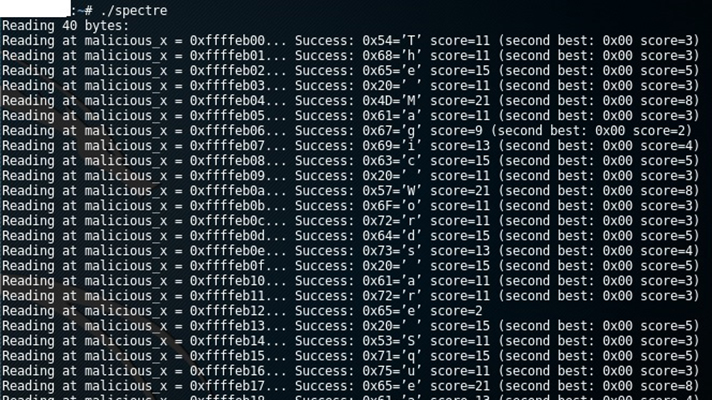Privacy & Security
SPONSORED
Privacy & Security
Abundant data supports the premise that most healthcare breaches are caused by unauthorized access or disclosure, whether by negligence or malicious targeting. Gartner recommends that healthcare organizations bring in a centralized, cloud-based identity and access management solution to protect access and usage of data. This webinar will present a case study on a hospital system that is the largest Cerner deployment in the world and what they did to establish an access environment that enabled them to support and protect 37,000 employees, 22 hospitals and 185 clinics and urgent care centers.
SPONSORED
Mobile Health IT
Hospitals around the globe are investing in mobile computers and it’s redefining the way healthcare is delivered. Zebra commissioned three global research studies focused on nurse managers, IT executives and recently hospitalized patients to better understand the role of technology in acute care hospitals. The Future of Healthcare 2022 Hospital Vision Study report summarizes the key results of this analysis.
SPONSORED
Privacy & Security
In blind surveys and in-depth interviews, HIMSS Analytics asked IT personnel about their current cybersecurity measures.
SPONSORED
Privacy & Security
Based on a recent survey, this paper reveals results that can help providers assess their progress and compare it to that of others.
SPONSORED
Compliance
In this webinar, we will discuss the benefits of deploying continuous monitoring as the foundation of your compliance validation program. Continuous monitoring with a cloud partner makes available, scalable resources such as people, processes, and technologies that even mid-sized healthcare organizations are challenged to provide. These resources can even be used to combat and adapt to new threats that prevent potential vulnerabilities from being exploited. Continuous monitoring meets the need for any organization to develop essential documentation and reporting required for audit support.
Complying with annual audits can be expensive, resource intensive, and time-consuming. As with many mandates, compliance with the HIPAA security rule can become a gigantic annual checklist instead of its original intent of protecting ePHI from inadvertent disclosure and maintaining the privacy and security of patient data. Compliance with an audit does not demonstrate security program maturity but instead demonstrates a point-in-time check. Audits should be a culmination and external validation of a mature, continual process of internal security and compliance validation.
We will also discuss how through the use of continuous monitoring, our client, Surgical Information Systems, achieved a demonstrably secure and compliant environment with fewer in-house resources. Continuous monitoring proactively identified and closed potential vulnerabilities as part of the ongoing process rather than retroactively, as a result of an audit or review. This partnership, where resources of the client and trusted are joined, removes much of the scramble for point-in-time report collection and presentation for auditors resulting in smoother and condensed audits.
Analytics
Chief information officer Mike Restuccia revisits past predictions and builds on recent developments on what's ahead for the new year.
Privacy & Security
Affected systems include Windows, Linux, Android, Chrome, iOS and MacOS but the good news is there is a public exploit code to test your system for vulnerabilities.
Analytics
The healthcare sector is improving its cybersecurity practices but as a whole, much more needs to be done.
SPONSORED
Privacy & Security
Internet of Things (IoT) is vastly changing the way that healthcare organizations look at security. The IoT healthcare landscape is comprised of multitudes of devices connected to healthcare networks, being accessed by thousands of patients, employees, clinicians, and contractors.
When tackling device security, you first need complete discovery of your infrastructure – physical and virtual, managed and unmanaged. Then you need to classify all devices, determine their security posture and continuously monitor them, which is no small task. Join us to find out how the largest integrated healthcare delivery organization and the largest federal government healthcare agency are accomplishing this.
During this webinar, you’ll learn:
How to gain real-time visibility and inventory of every device connected to your healthcare networks
How to automate enterprise-wide endpoint discovery, classification and remediation
How to streamline asset inventory and reporting for device management and regulatory compliance
SPONSORED
Privacy & Security
In healthcare organizations, risks to protected health information (PHI) are driving demand for new security tools that enable compliance. Where physicians and hospital staffers use unmanaged BYO devices to access health records from risky unsecured networks, healthcare firms need to carefully evaluate their security postures.
HIPAA is top of mind for every healthcare IT professional as they look to enable BYOD access. In this webinar, we explore HIPAA security requirements – access controls, transmission security, and audit capabilities – and how they apply to BYOD.
Please join our senior solutions engineer, Amish Kohli to learn how a comprehensive mobile security solution can mitigate risk by securing ePHI on any mobile device.










